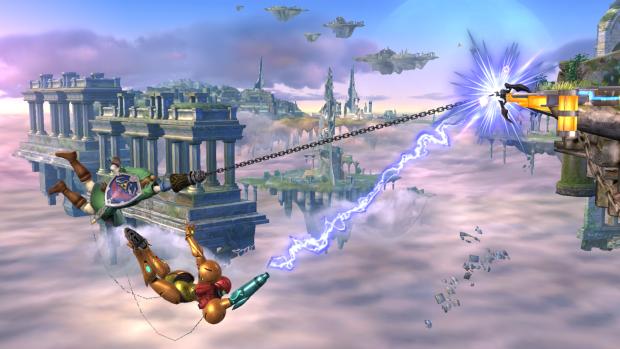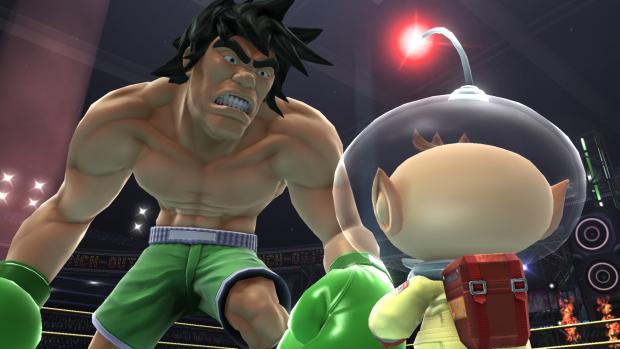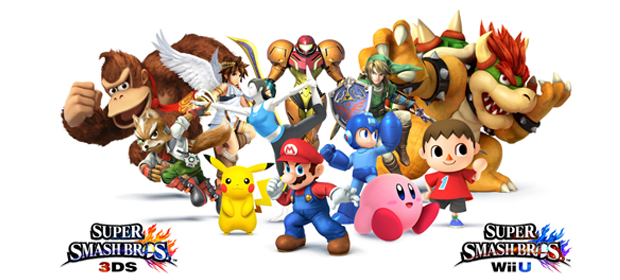It’s a well-documented fact that Super Smash Bros. for Wii U is not Super Smash Bros. Melee. Those hoping that the new Smash would offer up a grand re-creation of the Cube’s hyper-fast, mechanically wonky mascot brawler should, unfortunately, put those somewhat unreasonable expectations to one side.
It’s also a well-documented fact that Lead Designer Masahiro Sakurai and his team are attempting to create a game that feels (in terms of running speed, the way characters hit and all that jazz) somewhere between the two more recent offerings. Something that sits comfortably between the twitch reactions of Melee and the plodding float of Brawl. That point is accurate.
What that statement fails to really pinpoint, however, is just what Super Smash Bros for Wii U actually is. Or at least what it is at the moment. Having had some extensive hands-on time with the recent E3 build, I feel as though there are some important deviations from the Smash norm to chew our way through – and I’m not talking about landing lag (even if that is a big pain in the rear right now).

Let’s talk about Link first, as he’s my main Smash man. Most things about Link are as you’d expect. His special attacks are very much as they were in Brawl; he still grabs with the clawshot, and bombs are still brilliant. He’s also got a new running slash, which is actually a viable KO move, so that’s very nice. However it was upon using his forward Smash attack that I first noticed something hugely different with my pointy eared hero: the cool down frames on both stages of his forward Smash Attack were huge.
Sure, if I land either hit then my opponent will get sent flying – but if I miss? Well, then I’m wide open for a battering. It’s not even a small porthole either, it’s practically a bay window, and this wasn’t just the case with Link. Bowser’s down special (his Mario Bros. 3 butt slam) has the big man sitting around for a good second or two – much more than past games, and it was already bad then. There are plenty of other examples but it really feels like the biggest attacks carry some huge risks.
Is this bad? No. It’s just different. We’ve gone from games like Melee and Brawl where the vast majority of attacks were fairly safe to just hurl around (not all, but those that weren’t were quickly deemed to not be of much use), to Super Smash Bros for Wii U (and 3DS) where we’re being asked ‘should you really use that?’

It feels like an attempt to balance the application of a character’s entire moveset. With Super Smash Bros. for Wii U and 3DS it really feels as if the team want to really make sure that all of a fighter’s moves have a purpose. Quick nippy attacks build percentage, tilts are used for spacing, Smashes and Meteors are huge, risky KO focused gambles, while specials mix things up, and back airs are still stupidly brilliant. This system has always largely been the case but the lines between the attacks have never appeared quite so stark as they do in the current build of Super Smash Bros for Wii U and 3DS.
It’s evident that it’s a different game as soon as everyone grabs a controller. When facing off against one chap I could tell he’d played Smash in the past, but he was far too focused on big smash attacks and, well, the dodge has never felt like such a simple, effective technique. Due to the extended cool down after most Smash attacks it was incredibly easy to follow an effective dodge with a big riposte. Super Smash Bros for Wii U lets you punish predictable, thoughtless play with more than just grabs, and that’s not a bad thing once you get more used to it.
Not all the changes are so nerf-minded, though. Take Bowser for instance – his down B is dramatically worse when you miss, but his Down Air now causes him to drill towards the ground with enhanced speed, and his forward Smash has a delicious hit box and some incredible power.

The changes to specific attack power is also felt as you fall off the stage, too, considering I was still able to recover as Link at around 200-250% simply because my opponent was focusing on tilts and couldn’t seem to land any Smash attacks at all.
Little Mac is an absolute force of nature. Having a forward smash attack with some armour on it is already enough to throw any opponent through a loop, but toss in an unpredictable side B gambol, a counter, some crazy speed and the Captain Falcon rivalling satisfaction of his KO punch and you’ve got an arresting new addition to the roster.
As of right now, Super Smash Bros for Wii U and 3DS is just different. Honestly, it feels like a considered re-evaluation of what the Super Smash Bros. combat engine is. While that won’t necessarily satisfy those still faithful to Melee’s frenetic pace it certainly feels like a more intelligent retooling of the series after Brawl’s somewhat clumsy attempt to slap bandages over all of Melee’s perceived ‘problems’.
It may not be Melee 2.0, but Super Smash Bros for Wii U and 3DS is doing more than enough to ensure that it finds an audience that appreciates, and may even prefer its somewhat more thoughtful and considered take on the franchise. Roll on ‘Holiday’.





